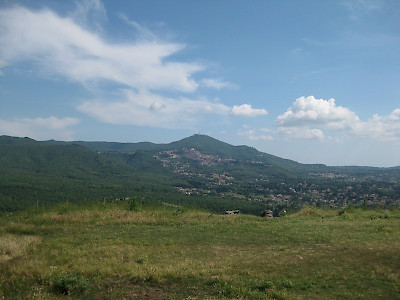Latium
Q1048669Latium: regio to the southeast of Rome.

Latium is bordered by the Tyrrhenian Sea in the southwest, by Etruria in the northwest, and by the Apennines in the northeast. In the southeast, the Pontine Plain were some kind of border, although Circei, beyond this plain, was considered to be a Latin port. The people spoke Latin and shared a cult for Jupiter on the Mons Albanus, a volcano in the center of Latium. The Roman believed that the name Latium was derived from latere, "to be in hiding", while the Greeks found a comparable etymological origin in their word lathein, "to escape notice,"note
Urbanization started in the Iron Age. Among the cities were: Alba Longa (believed to be the mother city of all Latins), Antemnae, Antium, Ardea, Aricia, Bovillae, Bubentum, Cabum, Cora, Carventum, Circei, Corioli, Corbio, Fidenae, Fortinea, Gabii, Labicum, Lanuvium, Lavinium, Laurentum, Nomentum, Norba, Praeneste, Pedum, Querquetula, Satricum, Scaptia, Setia, Tollenae, Tibur, Tusculum, Tolerium, Velitrae, and of course Rome.
Many Latin towns appear to have been subject to Rome prior to the demise of the Roman monarchy in the last years of the sixth century. After a crisis, in which the Aequi and Volsci overran eastern and southern Latium, the Latins and Romans created an alliance (the Foedus Cassianum), which was to last until the Latin War (340-338 Varronian). The members of the Latin League promised mutual help in wartime and made arrangements for marriage and trade.
After the Latin War, the Latins were integrated in the Roman commonwealth. The Via Appia from Rome to beyond Circei, built shortly afterwards, can be seen as project to unitfy the region. Latin citizenship could be a first step towards Roman citizenship.